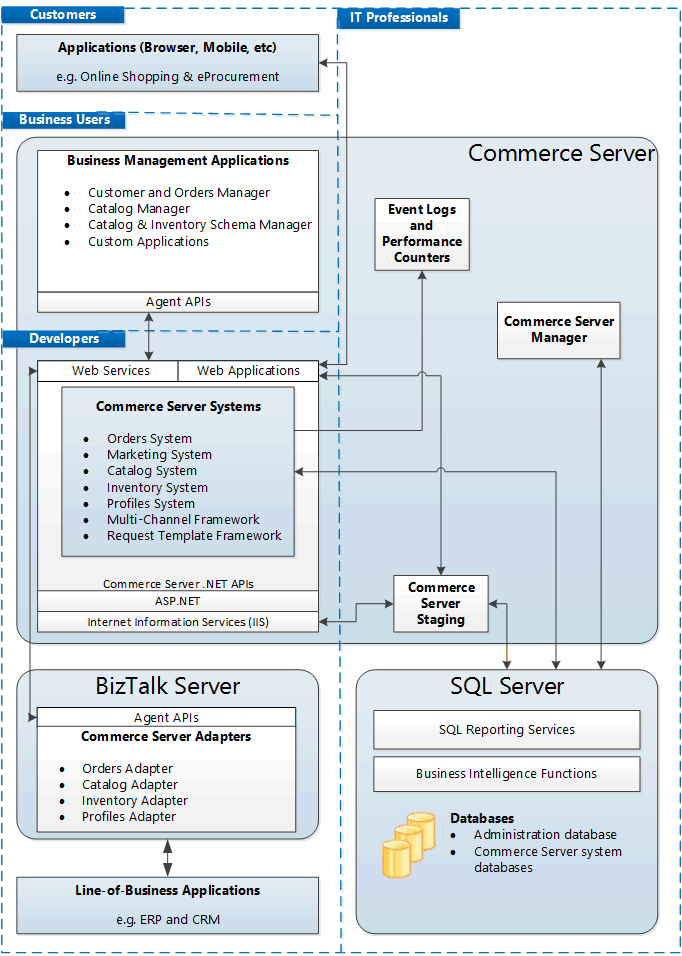Sitecore Commerce 7.5, powered by Commerce Server and Commerce Server 11.1 architecture is detailed in the following figure.
The following figure shows the architecture of Sitecore Commerce 7.5, powered by Commerce Server and Commerce Server 11.1. The numbers in the figure correspond to brief explanations of the various components of the architecture that follows the figure. Previous user of Sitecore Commerce 7.5, powered by Commerce Server and Commerce Server 11.1 will note that foundation components are not detailed. Sitecore integrations do not leverage any part of the foundation and are beyond the scope of this document.

- Customers use their browser to access a Commerce Server Web application. Such Web applications typically involve purchasing or otherwise ordering products that are browsed online, added to a basket, and ultimately acquired by completing the check-out process.
- Business users use the various smart client applications to manage the data maintained within the various systems.
- Within Sitecore Commerce 7.5, powered by Commerce Server and Commerce Server 11.1are the various Commerce Server systems, each of which has an extensive .NET API that you can use to access the functionality that they provide. Each of these Commerce Server systems provides a corresponding Web service so that its functionality can be accessed over the network. Additionally, they each support what is known as an agent API. Agent APIs use the corresponding Web service to create an easier-to-use, remote API that, other than how it is initialized, provides the same set of methods and properties that are available using the local .NET APIs.
- You can use Microsoft BizTalk Server to integrate a wide variety of line-of-business (LOB) applications. Examples of such LOB applications include enterprise resource planning (ERP) and customer relationship management (CRM) applications. Sitecore Commerce 7.5, powered by Commerce Server and Commerce Server 11.1 includes BizTalk adapters for the Orders, Catalog, Inventory, and Profiles Systems that generate and consume a standard set of BizTalk messages that can be used to export and import their different types of business data.
- The IT professionals who are tasked with the day-to-day operations of a Web application can use Microsoft Operations Manager to monitor both events that are logged by various systems and to track performance using the counters maintained by those systems.
- The Profiles System and the Orders System maintain performance counters and log events during operation.
- Another set of operational tasks are performed by IT professionals using the Commerce Server Manager, which is a Microsoft Management Console (MMC) snap-in. Commerce Server Manager is used to maintain a wide variety of Commerce Server configuration information.
- Staging is used by IT professionals to manage the deployment of various resources, and related resources, between different system environments. These resources include database information from SQL Server, metabase information from Internet Information Services (IIS), in addition to the various files that make up the Web applications.
- Sitecore Commerce 7.5, powered by Commerce Server and Commerce Server 11.1 uses SQL Server in several different capacities. The Commerce Server Administration database is also an SQL Server database, as are the various databases maintained to store the data associated with the different systems.